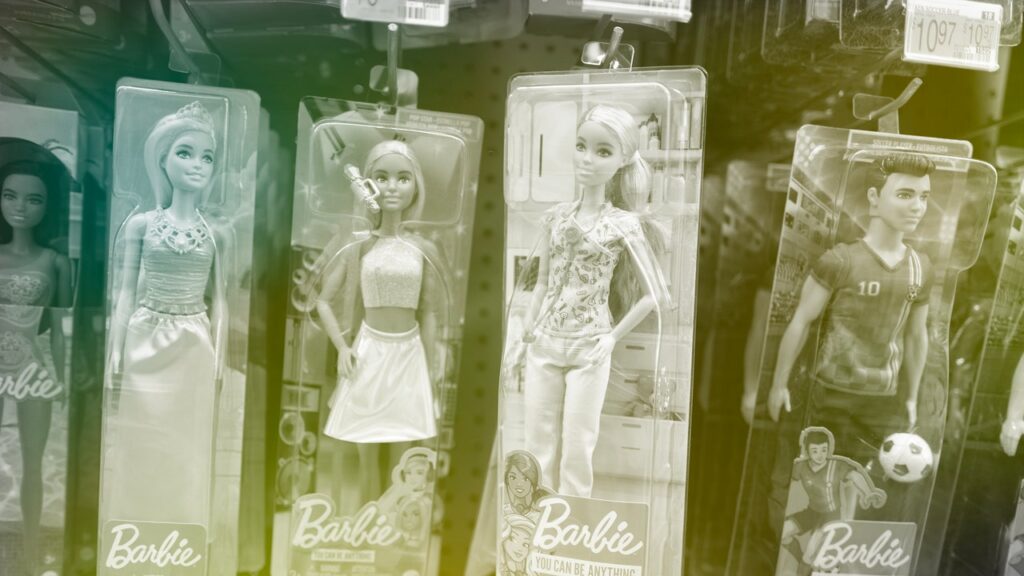Nobody has ever accused Donald Trump of being an economic philosopher, but maybe we have been missing something. In a televised Cabinet meeting last Wednesday, the President brought up the possibility that his trade war, and particularly his punitive tariffs on Chinese goods, would create empty shelves at retailers. “Well, maybe the children will have two dolls instead of thirty dolls,” he said. “And maybe the two dolls will cost a couple of bucks more than they would normally.”
Trump was trying to make the argument that the trade war would be less damaging to the U.S. than to China, which is facing a slump in factory orders. But his statement, which seemed to suggest that forcing Americans to consume less stuff for a while wouldn’t necessarily be a tragedy, attracted a great deal of attention. “SKIMP ON THE BARBIE,” a front-page headline in Thursday’s edition of the New York Post blared. The Guardian editors went with “No Ken Do.” To Greg Ahearn, the head of the Toy Association, an industry lobbying group, it was no laughing matter. Thanks to the tariffs, the industry is facing “a frozen supply chain that is putting Christmas at risk,” he told the Times. “If we don’t start production soon, there’s a high probability of a toy shortage this holiday season.” Despite this warning, Trump doubled down on his statements over the weekend, telling Kristen Welker, the host of NBC’s “Meet the Press,” “I’m just saying [children] don’t need to have thirty dolls. They can have three. They don’t need to have two hundred and fifty pencils. They can have five.”
Trump’s Cabinet meeting took place on the same day that the Commerce Department released its initial estimate of Gross Domestic Product for the first three months of 2025. The report showed that G.D.P. fell slightly, for the first time in three years. The decline was largely caused by businesses rushing to buy goods and components produced abroad, such as bicycles, microchips, and pharmaceuticals, before the tariffs went into effect. Since spending on imported goods doesn’t get counted directly in G.D.P., which tracks domestic production, this race to beat the tariffs led to headlines saying that Trump’s trade policies had caused the economy to go into reverse. That conclusion is premature. If you include the purchasing of foreign-produced goods, the over-all level of spending in the economy grew at a pretty strong rate—three per cent on an annualized basis. The report did, however, show that Trump’s tariffs are already having a dramatic effect, and in making his comments about toys he seemed to be preparing Americans for further disturbances ahead.
Until now, arguments for limiting consumption have tended to come from the left rather than the right. They date back at least to the economist Thorstein Veblen, who, at the start of the twentieth century, wrote acidly about the “conspicuous consumption” engaged in by grandees of the Gilded Age. More recently, a “degrowth” movement has emerged, which aims to decrease consumption and to de-prioritize G.D.P. growth on the grounds that they are harmful to the environment and that, in any case, accumulating more “stuff” doesn’t really increase the well-being of people. This argument depends on two concepts familiar to economists: the diminishing marginal utility of consumption, which is, roughly speaking, the notion that if you already own nineteen dolls, buying a twentieth won’t give you much pleasure, and competitive consumption, or the idea that many people are trapped in an endless cycle of trying to outshine their friends and neighbors with their purchases. “If everyone owned a Ferrari, the cars would be symbolically equivalent to scooters, giving rise to demand for more expensive ways to position oneself ahead of others,” the social scientists Giorgos Kallis, Susan Paulson, Giacomo D’Alisa, and Federico Demaria, wrote in their 2020 manifesto, “The Case for Degrowth.”
“Trump, degrowther,” the leftist journalist Doug Henwood commented online last week. He was being facetious, of course. Trump made his fortune selling luxury apartments that explicitly cater to the notion that you can never have enough of anything, especially gold plating. His crypto policies seem to be designed to further enrich himself and his family, and his energy policies are a recipe for increasing carbon emissions. Making personal sacrifices, short-term or otherwise, is foreign to Trump’s nature. And yet, for political reasons, he has been driven to ask Americans to accept some limits on their shopaholic tendencies. “What he is doing is fairly unprecedented: explicitly saying that he is willing to pay an economic price in terms of growth in order to protect something else that he thinks is valuable and important,” Daniel Susskind, an economics professor at King’s College London who is the author of the 2024 book “Growth: A History and a Reckoning,” told me in an e-mail. “Until now, Trump has tended to deny that tariffs come with any sort of price attached.”
In a March speech to the Economic Club of New York, Trump’s Treasury Secretary, Scott Bessent, provided a preview of sorts to his boss’s comments. “Access to cheap goods is not the essence of the American Dream,” Bessent said. “The American Dream is rooted in the concept that any citizen can achieve prosperity, upward mobility, and economic security.” He also claimed, not too convincingly, that Trump’s tariffs, by promoting the expansion of American manufacturing, would make it easier to achieve these long-term goals. The speech generated some skeptical commentary from political observers, and Trump has raised anew the question of whether it is possible for the Administration to sustain a policy that asks Americans to look beyond product shortages and price increases.
In a meeting with the President at the White House a couple of weeks ago, executives from major retailers reportedly warned Trump that these hardships are in the cards because of his hefty tariffs, which include a hundred-and-forty-five-per-cent levy on many goods from China. Recent data has indicated that shipping-container traffic from Chinese to U.S. ports is plummeting. “The consequence will be empty shelves in US stores in a few weeks and Covid-like shortages for consumers and for firms using Chinese products as intermediate goods,” Torsten Slok, the chief economist at the financial firm Apollo, wrote on Friday.
To be sure, the thirty-trillion-dollar U.S. economy isn’t entirely dependent on trade with China, and Trump got some good news on Friday when the Labor Department reported that U.S. employers created a hundred and seventy-seven thousand jobs in April, a higher figure than Wall Street had been expecting. The jobs update confirmed that, despite all the chaos and uncertainty that Trump’s trade policy has caused, the economy hasn’t gone into a slump, at least not yet. But other indicators are pointing south. “Survey data so far in April are unambiguously dire, with consumers expectations and manufacturing new orders and investment intentions all plunging,” the economic consultancy Pantheon Macroeconomics noted in a circular to clients.
Even McDonald’s is feeling the pinch. Last week, the fast-food chain reported that sales at its U.S. restaurants had declined at the fastest rate since the start of the COVID-19 pandemic, as many of its customers cut back on their visits: traffic from people earning forty-five thousand dollars per year or less dropped by more than ten per cent. This makes sense. Should the economy plunge into a full-on recession that causes unemployment to spike, less affluent people will suffer the most hardship from being laid off. It’s not surprising that they are engaging in some precautionary saving. Some of them may even be setting money aside for Christmas early. If Trump’s tariffs prevent the traditional holiday spending spree, which is the outcome that toy lobbyists fear, he’ll have a lot more explaining to do. ♦
Premium IPTV Experience with line4k
Experience the ultimate entertainment with our premium IPTV service. Watch your favorite channels, movies, and sports events in stunning 4K quality. Enjoy seamless streaming with zero buffering and access to over 10,000+ channels worldwide.

















